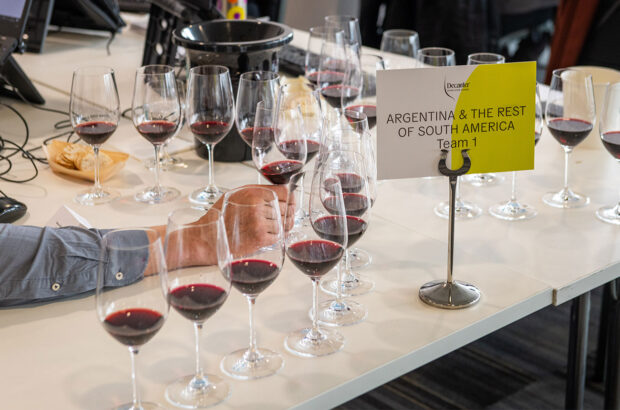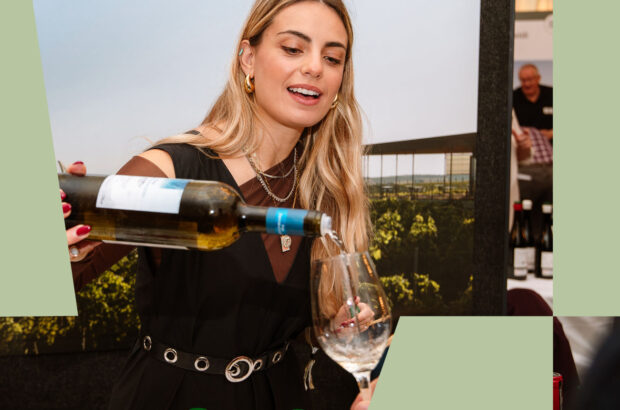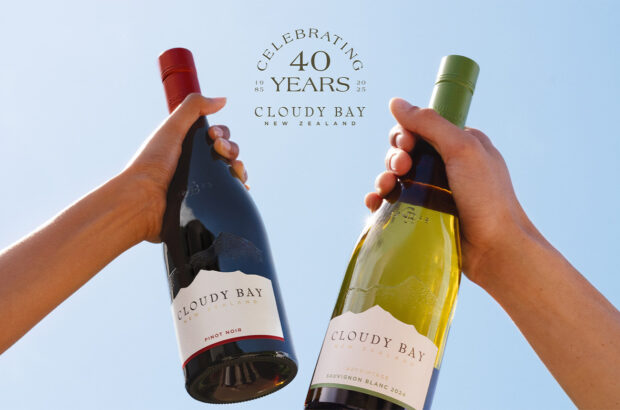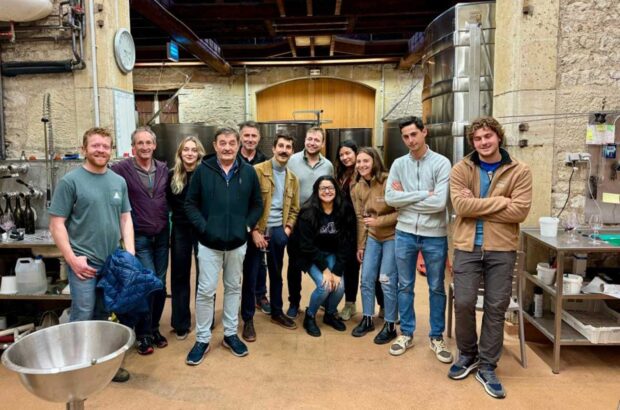The Alto Piemonte region is located just below the Italian Alps, with Monte Rosa clearly visible on the brightest of days. Imagine it as a wrist and hand, with protruding ‘fingers’ being the valleys of Boca, Gattinara, Lessona and Bramaterra.
Extreme weather phenomena here are relatively common, which describes very well the marginality of the climate – the province of Novara is 1°C cooler on average (12.02°C) and 300mm wetter (1,000mm) than Castiglione Falletto in Langhe.
Though without a doubt an enormous threat, this marginality is a terrific advantage for the grapes. Nebbiolo, the main variety in the blend of Alto Piemonte wines, alongside Vespolina, Croatina and Uva Rara, acquires a stunning elegance and complexity in the best vintages.
The area can be clearly defined as ‘heroic viticulture’, producing wines from steep, often terraced vineyards at altitude, giving almost unsurpassed layers of complexity and elegance. The wines of Boca are even known for their signature pink grapefruit character.
This article contains:
- The key appellations of Alto Piemonte
- What is the climate like in Alto Piemonte?
- The Alto Piemonte renaissance
- How well do the wines of Alto Piemonte age?
{"content":"PGRpdiBjbGFzcz0iYnJlYWtvdXQgcGFsZXR0ZS1hIHBhbmVsIHBhbmVsLWRlZmF1bHQiPjxkaXYgY2xhc3M9InBhbmVsLWJvZHkiPjxkaXYgY2xhc3M9J2JyZWFrb3V0LWNvbnRlbnQnPjwvcD4KPGgyIHN0eWxlPSJ0ZXh0LWFsaWduOiBsZWZ0Ij5UaGUga2V5IGFwcGVsbGF0aW9ucyBvZiBBbHRvIFBpZW1vbnRlPC9oMj4KPHAgc3R5bGU9InRleHQtYWxpZ246IGxlZnQiPldpbmVzIGZyb20gPHN0cm9uZz5HYXR0aW5hcmEgRE9DRzwvc3Ryb25nPiBtb3N0IG9mIHRoZSB0aW1lIGhhdmUgdGhlIGFiaWxpdHkgdG8gbWF0Y2ggcG93ZXIgd2l0aCBlbGVnYW5jZS48L3A+CjxkaXYgY2xhc3M9ImFkLWNvbnRhaW5lciBhZC1jb250YWluZXItLW1vYmlsZSI+CjxkaXYgaWQ9InBvc3QtaW5saW5lLTMiIGNsYXNzPSJpcGMtYWR2ZXJ0Ij48L2Rpdj4KPC9kaXY+CjxwIHN0eWxlPSJ0ZXh0LWFsaWduOiBsZWZ0Ij48c3Ryb25nPkJvY2EgRE9DIDwvc3Ryb25nPmlzIHByb2R1Y2VkIHVzaW5nIE5lYmJpb2xvIHdpdGggdGhlIGFkZGl0aW9uIG9mIFZlc3BvbGluYSB3aGljaCBicmluZ3MgYSBkaXN0aW5jdCBzcGljaW5lc3MgdG8gaXQuPC9wPgo8cCBzdHlsZT0idGV4dC1hbGlnbjogbGVmdCI+Q3JvYXRpbmEg4oCTIHdoaWNoIGlzIG5vdCBhbGxvd2VkIGluIEJvY2Eg4oCTIGlzIG9mdGVuIGEgcGFydG5lciBpbiA8c3Ryb25nPkJyYW1hdGVycmEgRE9DPC9zdHJvbmc+LCB3aXRoIGl0cyBwcm9ub3VuY2VkIGZydWl0IGNvbmNlbnRyYXRpb24sIHdoaWxlIFV2YSBSYXJhIGlzIGFsd2F5cyBnb29kIGZvciBzb2Z0ZW5pbmcgd2luZXMuPC9wPgo8ZGl2IGNsYXNzPSJhZC1jb250YWluZXIgYWQtY29udGFpbmVyLS1tb2JpbGUiPgo8ZGl2IGlkPSJwb3N0LWlubGluZS00IiBjbGFzcz0iaXBjLWFkdmVydCI+PC9kaXY+CjwvZGl2Pgo8cCBzdHlsZT0idGV4dC1hbGlnbjogbGVmdCI+V2hpbGUgPHN0cm9uZz5HaGVtbWUgRE9DRzwvc3Ryb25nPiwgPHN0cm9uZz5GYXJhIERPQzwvc3Ryb25nPiBhbmQgPHN0cm9uZz5TaXp6YW5vIERPQzwvc3Ryb25nPiBhcmUgYmFzZWQgb24gbW9zdGx5IHNhbmR5IHNvaWxzLCBHYXR0aW5hcmEsIEJvY2EgYW5kIHBhcnQgb2YgQnJhbWF0ZXJyYSBhcmUgb2Z0ZW4gcmVmZXJyZWQgdG8gYXMg4oCYdmluaSBkZWxsZSByb2NjZeKAmSwgb3Ig4oCYd2luZXMgZnJvbSBzdG9uZeKAmSwgYmVjYXVzZSBvZiB0aGUgbWluZXJhbGl0eSBkZXJpdmVkIGZyb20gdGhlIHVuZGVybHlpbmcgdm9sY2FuaWMgb3IgcG9yZmlkaWMgc29pbHMuPC9wPgo8cD4KPC9kaXY+PGRpdiBjbGFzcz0nYnJlYWtvdXQtYnV0dG9ucyc+PGRpdiBjbGFzcz0ncm93Jz48L2Rpdj48L2Rpdj48L2Rpdj48L2Rpdj4KPGRpdiBjbGFzcz0iYWQtY29udGFpbmVyIGFkLWNvbnRhaW5lci0tbW9iaWxlIj48ZGl2IGlkPSJwb3N0LWlubGluZS01IiBjbGFzcz0iaXBjLWFkdmVydCI+PC9kaXY+PC9kaXY+CjxwPlRoZSAmIzgyMTY7dmluaSBkZWxsZSByb2NjZSYjODIxNzsgYXJlIGxvY2F0ZWQgaW4gdGhlICYjODIxNjtjYWxkZXJhJiM4MjE3OywgdGhlIGNoYW1iZXIgb2YgdGhlIFZhbHNlc2lhIHN1cGVyLXZvbGNhbm8gd2hpY2ggY29sbGFwc2VkIDI4MCBtaWxsaW9uIHllYXJzIGFnby4gVGhpcyBnZW9wYXJrIGhhcyBiZWVuIHByb3RlY3RlZCBieSBVbmVzY28gc2luY2UgU2VwdGVtYmVyIDUgMjAxMy48L3A+CjxwPlRoZXJlIGlzIGEgbG90IG9mIGlyb24gYXZhaWxhYmxlIGZvciB0aGUgdmluZXMsIHlldCBub3QgbWFueSBvdGhlciBlbGVtZW50cyBzdWNoIGFzIHBvdGFzc2l1bSBiZWNhdXNlIG9mIHRoZSBhY2lkaWMgbmF0dXJlIG9mIHRoZSBzb2lsLiBUaGUgdmluZXMgc3RydWdnbGUsIGxlYWRpbmcgdG8gbG93IHZpZ291ciwgYnV0IHRoZSBhZHZhbnRhZ2UgaXMgYSBmYWlybHkgbG93IHBIIHdoaWNoIGlzIGEgZmllcmNlIGNvbnRyaWJ1dG9yIHRvIHRoZSBleHRyZW1lbHkgZnJlc2ggZnJ1aXQgcXVhbGl0eSBhbmQgb3ZlcmFsbCBzYXZvdXJpbmVzcyBvZiB0aGUgd2luZXMsIGJvdGggd2hpY2ggbGVuZCB0byB0aGVpciBhZ2VhYmlsaXR5LjwvcD4KPHA+4oCYT3VyIGJpZ2dlc3QgdGhyZWF0IGlzIHRoZSBsb3cgbGV2ZWwgb2YgcG90YXNzaXVtIGF2YWlsYWJsZSB0byB0aGUgdmluZXMs4oCZIHNhaWQgTWF0dGVvIEdhcnJvbmUgZnJvbSBDYW50aW5lIEdhcnJvbmUsIOKAmGV2ZW4gaWYgd2UgaGF2ZSB0aGUgcmlnaHQgYW1vdW50cyBvZiBvcmdhbmljIG1hdHRlcuKAmS4gR2Fycm9uZSBncm93cyBQcsO8bmVudCwgYSBzcGVjaWZpYyBjbG9uZSBvZiBOZWJiaW9sbyBpbiB0aGUgT3Nzb2xhIHZhbGxleSBhdCB0aGUgbm9ydGhlcm4gdGlwIG9mIEFsdG8gUGllbW9udGUsIGJvcmRlcmluZyBTd2l0emVybGFuZC4gVGhlIHZhbGxleSBpcyBwbGFudGVkIG9uIGJvdGggc2lkZXMgYmVjYXVzZSBpdCBydW5zIG5vcnRoLXNvdXRoLiBET0Mgd2luZSBwcm9kdWN0aW9uIGlzIG5vdCBhbGxvd2VkIG9uIHRoZSB2YWxsZXkgZmxvb3IsIGFub3RoZXIgcmVzdWx0IG9mIHRoZSBtYXJnaW5hbGl0eSBvZiB0aGUgdml0aWN1bHR1cmUgaGVyZS48L3A+CjxoMj5XaGF0IGlzIHRoZSBjbGltYXRlIGxpa2UgaW4gQWx0byBQaWVtb250ZT88L2gyPgo8cD5UaGUgY2xpbWF0ZSBpcyBjaGFsbGVuZ2luZywgbm90IG9ubHkgZm9yIGl0cyBtYXJnaW5hbGl0eSBidXQgYmVjYXVzZSBvZiB0aGUgdGhyZWF0IG9mIGhhaWxzdG9ybXMgJiM4MjExOyBzZXZlcmFsIHByb2R1Y2VycyBpbiBBbHRvIFBpZW1vbnRlIGFyZSBub3cgdXNpbmcgbmV0cyB0byBwcm90ZWN0IHRoZSB2aW5leWFyZHMuPC9wPgo8cD5BIGhlYXZ5IGhhaWxzdG9ybSBvbiBKdW5lIDMwIGRlc3Ryb3llZCBzb21lIG9mIHRoZSBiZXN0IEdhdHRpbmFyYSB2aW5leWFyZHMuIOKAmEkgZG9u4oCZdCB0aGluayB0aGVyZSBpcyBhbnl0aGluZyB0byBzYXks4oCZIHJlbWFya3MgTG9yZWxsYSBab3BwaXMgQW50b25pb2xvIGZyb20gdGhlIEFudG9uaW9sbyB3aW5lcnkuIOKAmFRoZSBoYWlsIGluIHNvbWUgdmluZXlhcmRzIGRpZG7igJl0IGV2ZW4gc3BhcmUgdGhlIGdyYXNz4oCZLjwvcD4KPHA+SGlnaCB0ZW1wZXJhdHVyZXMgZHVyaW5nIHRoZSBncm93aW5nIHNlYXNvbiBhbmQgaW5zb2xhdGlvbiBhcmUgdHdvIGFkZGl0aW9uYWwgdGhyZWF0cyB3aGljaCBwYXJ0bHkgZXhwbGFpbiB3aHkgdGhlIHBlcmdvbGEgdHJhaW5pbmcgc3lzdGVtIGlzIHN0aWxsIGluIHVzZSBpbiB0aGlzIGFyZWEuIEluIEJvY2EsIHRoZSBNYWdnaW9yaW5hIHN5c3RlbSBpcyBzdGlsbCBpbiBwbGFjZSwgcGxhbnRpbmcgZm91ciB2aW5lcyBpbiBhIHNxdWFyZSBhbmQgcHJ1bmluZyBmcm9tIHRoZSBjb3JuZXJzIHRvIHRoZSBjZW50cmUuIE1vc3RseSB1c2VkIGZvciBDcm9hdGluYSwgdGhpcyB0ZWNobmlxdWUgcHJlc2VydmVzIGNvbG91ciwgb2ZmZXJzIGdvb2QgcHJvdGVjdGlvbiBhZ2FpbnN0IHN0cm9uZyB3aW5kcyBhbmQgcmVzaXN0cyBoYWlsLCBzaW5jZSB0aGVzZSBzdG9ybXMgYWxtb3N0IGFsd2F5cyBjb21lIGZyb20gYSBzaW5nbGUgc2lkZS48L3A+CjxoMj5UaGUgQWx0byBQaWVtb250ZSByZW5haXNzYW5jZTwvaDI+CjxwPkF0IHRoZSBiZWdpbm5pbmcgb2YgMTkwMCB0aGVyZSB3ZXJlIDc1OSBoZWN0YXJlcyBvZiB2aW5leWFyZHMgaW4gdGhlIE9zc29sYSBWYWxsZXksIGNvbXBhcmVkIHRvIDUwaGEgdG9kYXkuPC9wPgo8cD5Cb2Nh4oCZcyB0cmFuc2Zvcm1hdGlvbiBoYXMgYmVlbiBldmVuIG1vcmUgZHJhc3RpYywgZ29pbmcgZnJvbSAxLDQwMCB0byBqdXN0IDMwaGEuPC9wPgo8cD5HYXR0aW5hcmHigJlzIHZpbmV5YXJkIGFyZWEgaGFzIGFsc28gZmFsbGVuLCBmcm9tIDY1MCB0byAxMjBoYS4g4oCYVGhleSBoYXZlIGdvbGQgaW4gdGhlaXIgcG9ja2V0cywgYW5kIHRoZXkgdGhyb3cgaXQgYXdheSzigJkgc2FpZCBmYW1vdXMgd3JpdGVyIEdpbm8gVmVyb25lbGxpIGluIHRoZSAxOTYwcyB3aGVuIGRpc2N1c3NpbmcgUHLDvG5lbnQuPC9wPgo8cD5Ub2RheSwgaG93ZXZlciwgdmluZXlhcmRzIGFyZSBzdGFydGluZyB0byBhcHBlYXIgb25jZSBtb3JlLCBpbmNyZWFzaW5nIGF0IGFyb3VuZCAxMCUgcGVyIHllYXIgaW4gR2F0dGluYXJhLjwvcD4KPHA+R2hlbW1lIGhhcyBncm93biBieSAyNWhhIG92ZXIgdGhlIHBhc3QgdHdvIHllYXJzIGFjY29yZGluZyB0byBMb3JlbGxhIFpvcHBpcywgZm9ybWVyIHByZXNpZGVudCBvZiB0aGUgQWx0byBQaWVtb250ZSBBc3NvY2lhdGlvbi4g4oCYU2l6emFubyBhbmQgRmFyYSB3ZXJlIHN0YWJsZSBvdmVyIHRoZSBwYXN0IGZldyB5ZWFycyB3aXRoIHRoZSByaXNrIG9mIGJlaW5nIGFic29yYmVkIGJ5IEdoZW1tZSwgYnV0IG5vdyBldmVuIHRob3NlIG1pbm9yIHRlcnJpdG9yaWVzIGFyZSByaXNpbmcu4oCZIEV2ZW4gc28sIGRvbuKAmXQgbG9vayBmb3Igb3JnYW5pYyB2aXRpY3VsdHVyZSBoZXJlLCBhcyB0aGVyZSBhcmUgYWxtb3N0IG5vIGNlcnRpZmllZCB3aW5lcmllcy48L3A+CjxoMj5Ib3cgd2VsbCBkbyB0aGUgd2luZXMgb2YgQWx0byBQaWVtb250ZSBhZ2U\/PC9oMj4KPHA+V2l0aCB0aGUgZXhjZXB0aW9uIG9mIEdhdHRpbmFyYSwgd2hpY2ggaGFzIHByb3ZlbiBpdHMgYWJpbGl0eSB0byBhZ2UsIG9uZSBjb3VsZCBkZWJhdGUgdGhlIGFnZWluZyBwb3RlbnRpYWwgb2YgdGhlc2UgYXBwZWxsYXRpb25zICYjODIxMTsgc29tZXRpbWVzIHRoZSB3aW5lcyBsYWNrIHRoZSB0YW5uaWMgc3RydWN0dXJlIG5lZWRlZCB0byBsYXN0IG1vcmUgdGhhbiAyMCB5ZWFycy48L3A+CjxkaXYgY2xhc3M9ImluamVjdGlvbiI+PC9kaXY+CjxwPlZpbnRhZ2VzIHN1Y2ggYXMgMjAxNiBhbmQgMjAxNywgd2hpY2ggd2VyZSBub3RhYmx5IGRyeSwgZ3JlYXRseSBpbmNyZWFzZWQgdGhlIGNvbmNlbnRyYXRpb24gaW4gdGhlIGZpbmlzaGVkIHdpbmVzLiDigJhJbiB0aGUgZnJlc2hlciAyMDE4IHZpbnRhZ2UsIEdhdHRpbmFyYSBkZWZlYXRlZCBCYXJvbG8gMy0wLOKAmSBzYWlkIFJvYmVydG8gQ29udGVybm8sIHJlZmVycmluZyB0byB0aGUgcG90ZW50aWFsIG9mIHRoZSB2aW50YWdlLjwvcD4KPHA+QWx0byBQaWVtb250ZSB3aW5lcyBvZnRlbiBoYXZlIGJvdGggdGhlIHZhbHVlIGFuZCB0aGUgZmluZXNzZSB0byBiZSBtb3JlIGFwcHJvYWNoYWJsZSB0aGFuIHRoZWlyIGNvdW50ZXJwYXJ0IDxzdHJvbmc+PGEgaHJlZj0iaHR0cHM6Ly93d3cuZGVjYW50ZXIuY29tL3dpbmUvZ3JhcGUtdmFyaWV0aWVzL25lYmJpb2xvLyIgdGFyZ2V0PSJfYmxhbmsiIHJlbD0ibm9vcGVuZXIgbm9yZWZlcnJlciI+TmViYmlvbG9zPC9hPjwvc3Ryb25nPiwgYnV0IHRoZXkgcmVxdWlyZSBhIHNhdnZ5IHdpbmUgZHJpbmtlciBpbiBvcmRlciB0byBiZSBmdWxseSBhcHByZWNpYXRlZCBmb3IgdGhlaXIgZmluZXIgZGV0YWlscy48L3A+CjxwPgo="}
Alto Piemonte wines: 12 top picks
{}
{"wineId":"51270","displayCase":"standard","paywall":true}
{"wineId":"51271","displayCase":"standard","paywall":true}
{"wineId":"51272","displayCase":"standard","paywall":true}
{"wineId":"51273","displayCase":"standard","paywall":true}
{"wineId":"51274","displayCase":"standard","paywall":true}
{"wineId":"51275","displayCase":"standard","paywall":true}
{"wineId":"51276","displayCase":"standard","paywall":true}
{"wineId":"51277","displayCase":"standard","paywall":true}
{"wineId":"51278","displayCase":"standard","paywall":true}
{"wineId":"51279","displayCase":"standard","paywall":true}
{"wineId":"51280","displayCase":"standard","paywall":true}
{"wineId":"51281","displayCase":"standard","paywall":true}
{}
Related content












